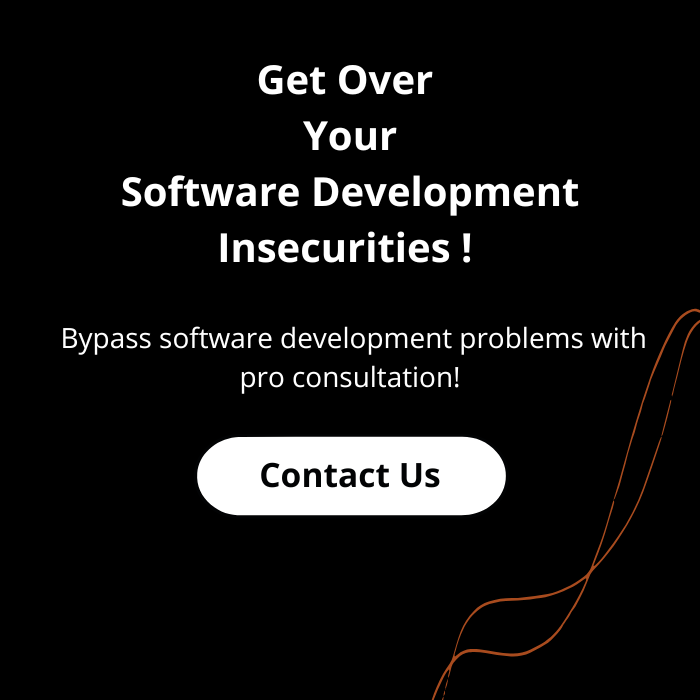According to a report by The Standish Group, 31.1% of projects are canceled before they’re completed and 52.7% of projects overrun budget by nearly twice as much as originally budgeted. These simple statistics around software development problems are good enough to scare people away from their dream custom software development project. But smart companies (like you!) hold on, do their research, bypass the issues and reap the sweet benefits anyway
It’s very well established that, custom software development means competitive advantage, faster time to market, increase in efficiency and reduction in cost, but only when its very meticulously planned and executed by a very experienced and professional team. We, in this article, take an honest look at the 5 most common software development problems and offer workarounds that will help keep the project on track.
Plan Foolproof Custom Software Development With BinaryFolks !
Software Development Problems:
Problem 1: Unclear and Ever-Changing Software Requirements
Every house has a foundation, right? Requirement gathering is the foundation of a software project. Unclear requirements mean a weak foundation and subsequent weaker product.
Unclear requirements also mean wrong time and cost estimate. Time and cost estimation of a software development project involves a lot of variables that highly differ from project to project based on complexity, the quantum of features and the sophistication of underlying technologies. So, inadequate software requirement gathering equals unrealistic time and cost estimates.
Another issue is ever-changing software requirements. So, on day one, you asked for a car with some specific engine capacity, fuel type, power, torque, etc. The next day, you ask to increase the torque. The third day, you say, I need an auto sliding door. See, what happens here – If you keep on adding to the requirements, your scope changes and so does the development. This will lead to a substantial increase in cost as well as development time.
Solution:
Know what you want. Adding each and every feature to your product might seem like a good idea at first but re-think that part.
Document your needs. Even if you think it will not make much difference, make it a point to note down the features, functionalities and the complete user-flow that’s in your head.
While discussing these requirements with your custom software development company, make sure they ask questions and cross-question in order to completely understand the end-to-end user software flow. If they nod yes, to every requirement without feedback of their own, cross the company off your list and move on to another one.
Make sure your software vendor drafts a Business Requirement Document (BRD). The document should have a project plan with clear goals that should act as a roadmap for both the developers and the client.
From the client-side, to make sure the scope isn’t forever changing, start with market research to understand which features are in trend and will serve the purpose of the software. Keep the vital features for phase I and once the development is complete and Phase I reacts well with the users, add functionalities in subsequent phases.
Also, breaking the project into milestones will help keep estimates in check and set clear expectations about when you get what.
Problem 2: Inadequate Communication
Irrespective of whether you are hiring some local software vendor or outsourcing software development to some other continent, communication is what allows the software firm and the business stakeholders to collaborate together.
Poor communication can slow a project down to the point where it’s no longer relevant or valuable. Issues with communication might be lingual or might be not getting regular updates. Miscommunication can lead to missed deadlines and feature requests and may incur additional expenses and time or poor products that don’t meet stakeholder expectations.
Solutions:
Make sure you are assigned to a project manager as your single point of contact. The project manager should be your go-to person for everything. He/She is responsible for providing clear instructions to the team, distributing tasks and resources, tracking overall project progress and then communicating the necessary details to the clients.
Conduct regular meetings to know the progress of the project. Demand updates after every milestone, if your project is divided into milestones. With technologies like whiteboarding, video calling, screen sharing, etc., it’s very easy to cut across multiple time-zone barriers and simulates a local office environment to facilitate better collaboration and quick problem resolution.
For fluency, make sure you hire software developers that can communicate in fluent English. Software development is iterative and without communication, you don’t really stand a chance.
Problem 3: Confidentiality Of Information
You have a list of software companies with whom you need to share your business idea. This can be overwhelming. These are the people you don’t know and don’t trust. So, sharing your software idea with them is a risky ask.
In situations like this, one’s worried that their ideas might be stolen or their trade secrets might be exposed or stolen.
Solution:
A Non-Disclosure Agreement is a solution. A non-disclosure agreement (NDA) is a legal contract between parties, i.e. the software vendor and you, outlining the information that is to be shared and requiring that information be kept confidential.
NDA means you share confidential information to evaluate this potential relationship without fear of this information being exposed or stolen.
If there is a breach of the NDA by any party, the other party may seek legal recourse.
Problem 4: Too Many Bugs And A Flawed Final Product
Let’s point out here only: Perfect software is a myth. Bugs and glitches are a part of every software and are inevitable. Our goal here is to reduce their occurrence.
The quality of the software is what you are working so hard for at the end of the day. Flawed and buggy software can significantly affect your business. First, you might have a delay in launch because developers will take some extra time to fix the issues. Second, if the issues are discovered after launch, it would mean a huge dissatisfaction of users and might subsequently result in a huge blow to your reputation and might not last long in the marketplace.
Solution:
Invest in proper QA from the beginning. It’s a proven fact that the earlier that bugs are discovered, the cheaper it is to fix them.
Test every milestone thoroughly. This will help detect anomalies in design as well as process flow earlier and will be easier to deal with. Testing once the complete project is ready means having to re-do a significant part of the work and also subsequent processes that depend on that.
Testing also helps provide the best customer satisfaction and the best user experience possible. This will, in turn, help you gain loyal clients that you can have a long-term relationship with.
Problem 5: Hidden Costs
You spoke to a developer or you hired a software vendor that promised you the world at $10/hour. Your happiness knows no bounds. You think to yourself, with this whole lot of money that I save, I’ll market my product better. What could go wrong? Well, prepare to be surprised. When you get your final bill, you see the cost is much higher than what was committed. This is because of the hidden costs – expenses that were not included in the purchase price.
Another hidden cost is the cost that you incur when your product is badly designed and has a terribly written code. This will directly affect your product quality and, in turn, user experience, reputation, and revenue. The amount of money you have to spend dealing with the hassles will account for much higher costs in the long run.
Another major issue is the hidden cost of a security breach. Hiring firms who work at $10/hour will not be dedicated to your projects. And being brutally honest here, will not have quality developers either. So, security might be the least of their priority. So, saving hundreds of dollars by cutting corners can mean exposing your client’s data and that’s a risk you shouldn’t be willing to take.
Solution:
Request your software vendor to create a Business Requirement Document (Any competent firm will do this). This document must have every feature, functionality and complete user flow of your software. Even features that were initially discussed but later scraped should also be a part of the document. Then ask your vendor to give a cost estimate based on this document.
A focused and detailed BRD will help keep your time as well as cost estimates in check. It acts as an informal contract that you can always go back to in case of conflicts or disputes.
Always make sure that you make security a priority. Ask the developers how they think of implementing security for your software and what security practices are in trend.
That was about the software development challenges but did you know you can bypass them effectively with BinaryFolks?
Why Does Software Development With BinaryFolks Make For A Wise Choice?
Driven by ex-engineers from Google, Amazon & Salesforce
101% Value For Money (+1 for Our Complimentary Consultation before You Spend Your 1st Dollar!)
Reviews That You Can Verify!
Safeguarded Business With An NDA
Out-Of-The-Box Innovations
Eye For Details
Questions Galore (Until Your Requirement & Our Understanding are mirror copies!)
Insight-Rich Scope Enhancement
Intense Domain Expertise
Close-knit feedback loop
Finally:
If you hire someone who’s incompetent, you will come across all of these issues. So, the first step towards custom software development is due-diligence.
You absolutely have to spend a considerable amount of time researching the potential software firms. And then you have to spend some more time communicating with each of them.
A company with an impressive portfolio, direct involvement of management, good third-party reviews and customer testimonials who have deep technical and industrial knowledge are pretty much the right fit. Apart from these, communication and approach to software development is also a factor. If you get this part right, the above issues cross out on their own. But getting this part right is tricky. We have a list of things to follow in order to hire the best software development company for you to make your job slightly easier.
Software development is a bit complicated. Proper research before hiring a firm, communication, planning, and testing ensures that business stakeholders don’t fall victim to the above-mentioned software development problems.



.png)

